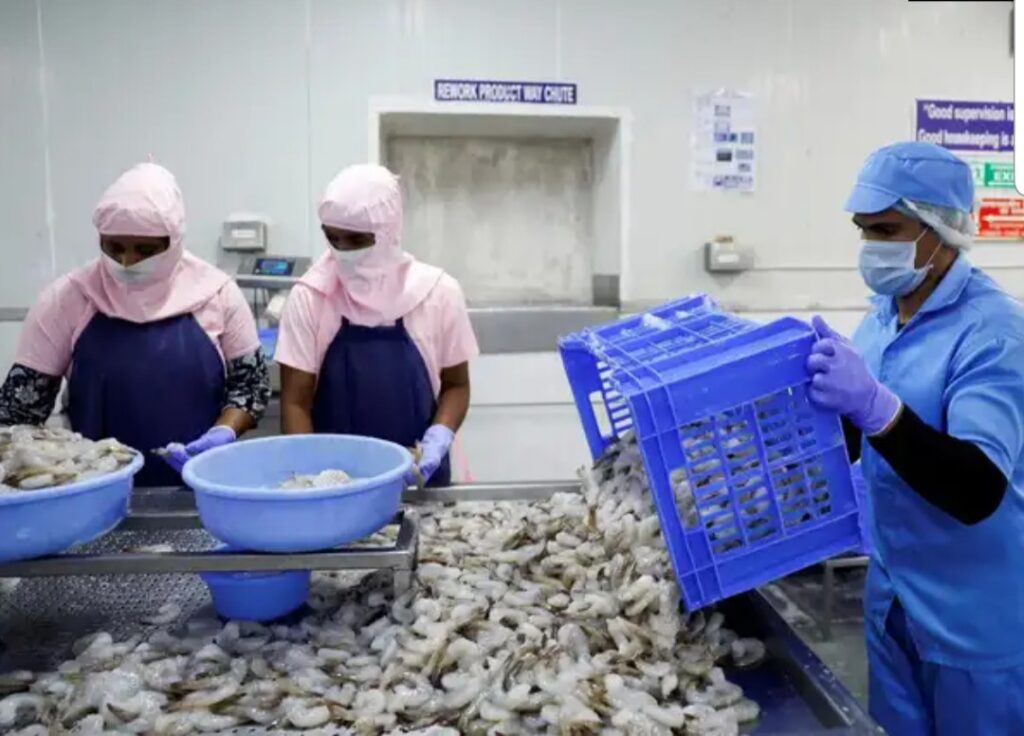
India’s shrimp industry is exploring new strategies to reduce its dependence on exports and boost domestic demand, as mounting U.S. tariffs threaten to erode the sector’s profitability.
The National Fisheries Development Board (NFDB) has set up a committee to design campaigns aimed at rebranding shrimp for Indian consumers, traditionally more inclined toward fish and chicken. The move comes amid fears that heavy reliance on overseas markets leaves the industry exposed to geopolitical and trade risks.
The urgency is heightened by the United States, India’s largest shrimp buyer, imposing 25% tariffs on Indian shrimp, with another 25% hike taking effect from August 27. Exporters have already cut purchase prices by nearly 20%, squeezing the margins of thousands of farmers, particularly in Andhra Pradesh, which contributes more than 70% of the country’s shrimp output.
“Shrimp farming has sustained our livelihoods for years, but with these tariffs, many of us are thinking of shifting to fish or other businesses,” said a farmer from Krishna district.
To prevent an exodus from the sector, the government is looking inward. Officials say the domestic market, though underdeveloped, has enormous potential. Urban middle-class consumers are increasingly open to seafood, and supermarkets are beginning to stock branded, ready-to-cook shrimp products.
Industry watchers believe this could mark a turning point. “If India can cultivate a strong local appetite for shrimp, it will not only safeguard farmers’ incomes but also make the sector more resilient to global shocks,” said a seafood trade analyst.
For now, shrimp farmers remain caught between an uncertain export outlook and the promise of a homegrown market still in its infancy.